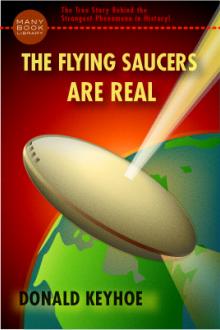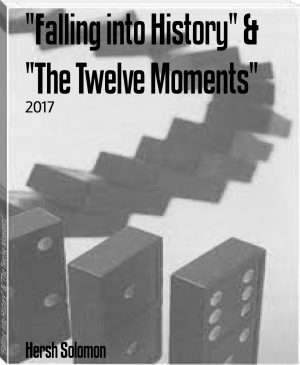The Expression of Emotion in Man and Animals by Charles Darwin (adult books to read TXT) 📕

- Author: Charles Darwin
- Performer: -
Book online «The Expression of Emotion in Man and Animals by Charles Darwin (adult books to read TXT) 📕». Author Charles Darwin
Lastly, with respect to the Australians, four of my informants answer by a simple negative, and one by a simple affirmative.
Mr. Bunnett, who has had excellent opportunities for observation on the borders of the Colony of Victory, also answers by a “yes,”
adding that the gesture is performed “in a more subdued and less demonstrative manner than is the case with civilized nations.”
This circumstance may account for its not having been noticed by four of my informants.
These statements, relating to Europeans, Hindoos, the hill-tribes of India, Malays, Micronesians, Abyssinians, Arabs, Negroes, Indians of North America, and apparently to the Australians—many of these natives having had scarcely any intercourse with Europeans—are sufficient to show that shrugging the shoulders, accompanied in some cases by the other proper movements, is a gesture natural to mankind.
This gesture implies an unintentional or unavoidable action on our own part, or one that we cannot perform; or an action performed by another person which we cannot prevent.
It accompanies such speeches as, “It was not my fault;”
“It is impossible for me to grant this favour;” “He must follow his own course, I cannot stop him.” Shrugging the shoulders likewise expresses patience, or the absence of any intention to resist.
Hence the muscles which raise the shoulders are sometimes called, as I have been informed by an artist, the patience muscles.”
Shylock the Jew, says,
“Signor Antonio, many a time and oft
In the Rialto have you rated me
About my monies and usances;
Still have I borne it with a patient shrug.”
Merchant of Venice, act 1. sc. 3.
Sir C. Bell has given[14] a life-like figure of a man, who is shrinking back from some terrible danger, and is on the point of screaming out in abject terror.
He is represented with his shoulders lifted up almost to his ears; and this at once declares that there is no thought of resistance.
As shrugging the shoulders generally implies “I cannot do this or that,”
so by a slight change, it sometimes implies “I won’t do it.”
The movement then expresses a dogged determination not to act.
Olmsted describes[15] an Indian in Texas as giving a great shrug to his shoulders, when he was informed that a party of men were Germans and not Americans, thus expressing that he would have nothing to do with them. Sulky and obstinate children may be seen with both their shoulders raised high up; but this movement is not associated with the others which generally accompany a true shrug.
An excellent observer[16] in describing a young man who was determined not to yield to his father’s desire, says, “He thrust his hands deep down into his pockets, and set up his shoulders to his ears, which was a good warning that, come right or wrong, this rock should fly from its firm base as soon as Jack would; and that any remonstrance on the subject was purely futile.”
As soon as the son got his own way, he “put his shoulders into their natural position.”
[14] `Anatomy of Expression,’ p. 166.
[15] `Journey through Texas,’ p. 352.
Resignation is sometimes shown by the open hands being placed, one over the other, on the lower part of the body. I should not have thought this little gesture worth even a passing notice, had not Dr. W. Ogle remarked to me that he had two or three times observed it in patients who were preparing for operations under chloroform.
They exhibited no great fear, but seemed to declare by this posture of their hands, that they had made up their minds, and were resigned to the inevitable.
We may now inquire why men in all parts of the world when they feel,—
whether or not they wish to show this feeling,—that they cannot or will not do something, or will not resist something if done by another, shrug their shoulders, at the same time often bending in their elbows, showing the palms of their hands with extended fingers, often throwing their heads a little on one side, raising their eyebrows, and opening their mouths.
These states of the mind are either simply passive, or show a determination not to act. None of the above movements are of the least service. The explanation lies, I cannot doubt, in the principle of unconscious antithesis.
This principle here seems to come into play as clearly as in the case of a dog, who, when feeling savage, puts himself in the proper attitude for attacking and for making himself appear terrible to his enemy; but as soon as he feels affectionate, throws his whole body into a directly opposite attitude, though this is of no direct use to him.
[16] Mrs. Oliphant, `The Brownlows,’ vol. ii. p. 206.
Let it be observed how an indignant man, who resents, and will not submit to some injury, holds his head erect, squares his shoulders, and expands his chest. He often clenches his fists, and puts one or both arms in the proper position for attack or defence, with the muscles of his limbs rigid. He frowns,—that is, he contracts and lowers his brows,—and, being determined, closes his mouth. The actions and attitude of a helpless man are, in every one of these respects, exactly the reverse. In Plate VI.
we may imagine one of the figures on the left side to have just said, “What do you mean by insulting me?” and one of the figures on the right side to answer, “I really could not help it.”
The helpless man unconsciously contracts the muscles of his forehead which are antagonistic to those that cause a frown, and thus raises his eyebrows; at the same time he relaxes the muscles about the mouth, so that the lower jaw drops.
The antithesis is complete in every detail, not only in the movements of the features, but in the position of the limbs and in the attitude of the whole body, as may be seen in the accompanying plate.
As the helpless or apologetic man often wishes to show his state of mind, he then acts in a conspicuous or demonstrative manner.
In accordance with the fact that squaring the elbows and clenching the fists are gestures by no means universal with the men of all races, when they feel indignant and are prepared to attack their enemy, so it appears that a helpless or apologetic frame of mind is expressed in many parts of the world by merely shrugging the shoulders, without turning inwards the elbows and opening the hands.
The man or child who is obstinate, or one who is resigned to some great misfortune, has in neither case any idea of resistance by active means; and he expresses this state of mind, by simply keeping his shoulders raised; or he may possibly fold his arms across his breast.
Signs of affirmation or approval, and of negation or disapproval: nodding and shaking the head.—I was curious to ascertain how far the common signs used by us in affirmation and negation were general throughout the world. These signs are indeed to a certain extent expressive of our feelings, as we give a vertical nod of approval with a smile to our children, when we approve of their conduct; and shake our heads laterally with a frown, when we disapprove.
With infants, the first act of denial consists in refusing food; and I repeatedly noticed with my own infants, that they did so by withdrawing their heads laterally from the breast, or from anything offered them in a spoon. In accepting food and taking it into their mouths, they incline their heads forwards. Since making these observations I have been informed that the same idea had occurred to Charma.[17] It deserves notice that in accepting or taking food, there is only a single movement forward, and a single nod implies an affirmation.
On the other hand, in refusing food, especially if it be pressed on them, children frequently move their heads several times from side to side, as we do in shaking our heads in negation. Moreover, in the case of refusal, the head is not rarely thrown backwards, or the mouth is closed, so that these movements might likewise come to serve as signs of negation.
Mr. Wedgwood remarks on this subject,[18] that “when the voice is exerted with closed teeth or lips, it produces the sound of the letter n or m.
Hence we may account for the use of the particle ne to signify negation, and possibly also of the Greek mh in the same sense.”
[17] `Essai sur le Langage,’ 2nd edit. 1846. I am much indebted to Miss Wedgwood for having given me this information, with an extract from the work.
That these signs are innate or instinctive, at least with Anglo-Saxons, is rendered highly probable by the blind and deaf Laura Bridgman “constantly accompanying her yes with the common affirmative nod, and her no with our negative shake of the head.” Had not Mr. Lieber stated to the contrary,[19] I should have imagined that these gestures might have been acquired or learnt by her, considering her wonderful sense of touch and appreciation of the movements of others.
With microcephalous idiots, who are so degraded that they never learn to speak, one of them is described by Vogt,[20] as answering, when asked whether he wished for more food or drink, by inclining or shaking his head.
Schmalz, in his remarkable dissertation on the education of the deaf and dumb, as well as of children raised only one degree above idiotcy, assumes that they can always both make and understand the common signs of affirmation and negation.”
Nevertheless if we look to the various races of man, these signs are not so universally employed as I should have expected; yet they seem too general to be ranked as altogether conventional or artificial.
My informants assert that both signs are used by the Malays, by the natives of Ceylon, the Chinese, the negroes of the Guinea coast, and, according to Gaika, by the Kafirs of South Africa, though with these latter people Mrs. Barber has never seen a lateral shake used as a negative. With respect to the Australians, seven observers agree that a nod is given in affirmation; five agree about a lateral shake in negation, accompanied or not by some word; but Mr. Dyson Lacy has never seen this latter sign in Queensland, and Mr. Bulmer says that in Gipps’ Land a negative is expressed by throwing the head a little backwards and putting out the tongue.
At the northern extremity of the continent, near Torres Straits, the natives when uttering a negative “don’t shake the head with it, but holding up the right hand, shake it by turning it half round and back again two or three times.”[22] The throwing back of the head with a cluck of the tongue is said to be used as a negative by the modern Greeks and Turks, the latter people expressing yes by a movement like that made by us when we shake our heads.[23] The Abyssinians, as I am informed by Captain Speedy, express a negative by jerking the head to the right shoulder, together with a slight cluck, the mouth being closed; an affirmation is expressed by the head being thrown backwards and the eyebrows raised for an instant.
The Tagals of Luzon, in the Philippine Archipelago, as I hear from Dr. Adolf Meyer, when they say “yes,” also throw the head backwards.
According to the Rajah Brooke, the Dyaks of Borneo express an affirmation by raising the eyebrows, and a negation by slightly contracting them, together with





Comments (0)